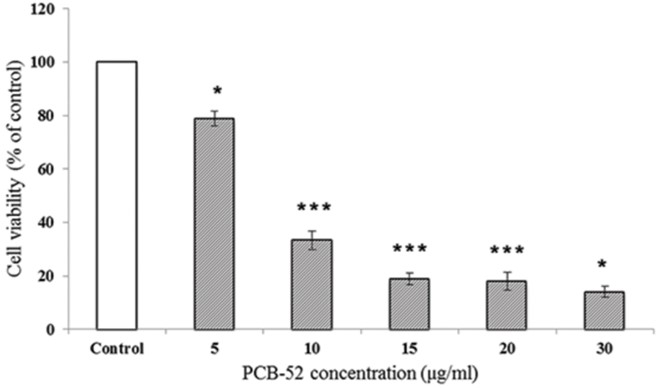SK-N-SH-based Cytotoxicity Safety Screening Service
Ensuring Neuroprotection with Precision: Advanced SK-N-SH Cytotoxicity Screening
Creative Biolabs provides comprehensive In Vitro ADME services as follows, which are designed to support the development of immunotherapies.
These services are critical in understanding how new immunotherapeutic agents are absorbed, distributed, metabolized, and excreted, ensuring their safety and efficacy before clinical use.
At Creative Biolabs, we are excited to introduce our SK-N-SH-based cytotoxicity safety screening service, providing high-quality, precise, and reliable results. Our expert team and state-of-the-art technology ensure the highest standards in assessing the cytotoxicity of compounds using the SK-N-SH neuroblastoma cell line, making us a trusted partner in drug development and safety assessment.
Advantages of SK-N-SH Cells for Cytotoxicity Assays:
-
Human Neuronal Characteristics: SK-N-SH cells exhibit neuronal properties and can differentiate into neuron-like cells, making them relevant for studying neurotoxicity.
-
Sensitivity to Toxic Insults: They are sensitive to various cytotoxic agents, allowing for accurate assessment of drug-induced toxicity.
-
Consistent Performance: They provide reliable and reproducible results, crucial for evaluating the safety profiles of pharmaceutical compounds.
-
Relevance to Neurological Disorders: Their origin from a neuroblastoma tumor and ability to mimic neuronal responses make them particularly suitable for studying drugs targeting neurological disorders.
Assay Information:
Our SK-N-SH-based cytotoxicity safety screening service assesses cell viability, cytotoxicity, and mitochondrial respiration using Beetle luciferin + ATP as the substrate and tamoxifen as the control inhibitor in a functional assay with SK-N-SH cells, detected through luminescence.
|
Substrate
|
Assay Type
|
Cell Type
|
Control Inhibitor
|
Detection Method
|
|
Beetle luciferin + ATP
|
Functional
|
SK-N-SH
|
Tamoxifen
|
Luminescence
|
Workflow

-
Cell Culture Preparation
-
Media Preparation: Cultivate SK-N-SH cells in DMEM supplemented with 10% fetal bovine serum (FBS) and 1% penicillin-streptomycin.
-
Plating Cells
-
Cell Harvesting: Detach SK-N-SH cells with the use of trypsin-EDTA, then count the number and verify mobile viability.
-
Seeding: Seed the cells right into a 96-properly plate at the foremost density for the assay.
-
Recovery: Incubate the cells for 24 hours to allow them to adhere and get over the plating system.
-
Compound Treatment
-
Preparation: Prepare serial dilutions of the take a look at compounds in suitable solvents.
-
Application: Add the test compounds to the wells in triplicate, together with car controls and tamoxifen as the effective manipulation inhibitor.
-
Incubation: Incubate the cells with the compounds for 24-72 hours, depending on the experimental requirements.
-
Substrate Addition
-
Preparation: Prepare the Beetle luciferin + ATP substrate solution.
-
Addition: Add the substrate to each well to initiate the luminescence response.
-
Detection
-
Measurement: Use a luminescence microplate reader to measure the luminescence signal from each well.
-
Recording: Record the luminescence depth, which correlates with cell viability, cytotoxicity, and mitochondrial respiration.
-
Data Analysis
-
Processing: Analyze the luminescence records to assess the cytotoxic consequences of the check compounds on SK-N-SH cells.
-
Calculations: Calculate IC50 values and compare them with controls.
-
Visualization: Generate dose-response curves to illustrate the cytotoxic effects of the compounds.
Published Data
This study demonstrated a significant reduction in mobile viability in SK-N-SH cells handled with PCB-52, indicating its cytotoxic nature. This highlights the potential harm of PCB-52 on neuronal cells, emphasizing the want for protective agents like mangosteen extract. The extract showed promise in mitigating cytotoxicity, suggesting its capacity for neuroprotective blessings.
 Fig.1 Cytotoxic effects of PCB-52 on SK-N-SH cells after 24-h incubation.1
Fig.1 Cytotoxic effects of PCB-52 on SK-N-SH cells after 24-h incubation.1
Applications
-
Assessing the protection and efficacy of ability remedies targeting neurological disorders
-
Identifying toxic outcomes of recent chemical entities on neuronal cells, making sure the protection of compounds before scientific trials.
-
Understanding the cellular pathways suffering from neurotoxic agents and their impact on neuronal fitness.
-
Facilitating big-scale screening for neurotoxic compounds, accelerating the drug discovery method.
Advantages
-
Relevance to Neurotoxicity Studies: Using SK-N-SH neuroblastoma cells presents an applicable model for reading neurotoxicity, reflecting human neuronal responses.
-
Comprehensive Analysis: Simultaneous measurement of mobile viability, cytotoxicity, and mitochondrial respiration gives a radical evaluation of compound effects on neuronal cells.
-
High Sensitivity and Precision: Luminescence-based detection guarantees accurate and sensitive dimensions of cell responses to test compounds.
Contact us to explore how our SK-N-SH-based cytotoxicity protection screening offerings can beautify your research results.
Reference
-
Sattayasai, Jintana, et al. "Protective effects of mangosteen extract on H2O2-induced cytotoxicity in SK-N-SH cells and scopolamine-induced memory impairment in mice." PLoS one 8.12 (2013): e85053.
For Research Use Only | Not For Clinical Use



 Fig.1 Cytotoxic effects of PCB-52 on SK-N-SH cells after 24-h incubation.1
Fig.1 Cytotoxic effects of PCB-52 on SK-N-SH cells after 24-h incubation.1
 Download our brochure
Download our brochure